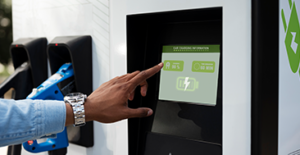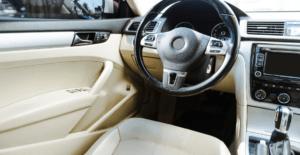Implementation of 2 Speed Torque on Demand (TOD) Transfer Case system

Implementation of 2 Speed Torque on Demand (TOD) Transfer Case system

Business Overview
The Client required a 2 Speed Torque On Demand (TOD) Transfer Case system using the existing hardware for Transfer case Control Unit(TCU). The transfer case needed to transition the vehicle from 2WD to 4WD and vice versa effortlessly.

Challenge
The client had already developed existing technology but the software was binary. Accordingly, NeST redeveloped the existing benchmark technology on the basis of the requirements provided by the customer.
Solution
The transfer case needed to transition from 2WD to 4WD and vice versa effortlessly.
The four different modes of the transfer case are as follows:
- 2H mode
- Auto mode
- 4H Mode (4WD Lock)
- 4L Mode (4WD Low Range)
These modes will be selected based on the vehicle mode provided by the ATS or ESP ECU of the vehicle. The transfer case ECU will change the modes based on different geographical terrains. It is able to control the torque by controlling the Clutch actuator and in turn, the percentage of this clutch control is determined with the help of different CAN signals like Wheel speed, Throttle position, Steering angle etc. (TOD Transfer case will be a node in the Vehicle CAN network so this module will follow CAN network specification.)
In addition, it monitors the temperature and will initiate temperature shutdown if the temperature increases. Temperature monitoring and Thermal Shutdown Strategy shall be carried over from a former project with the client.
Features:
- Network Failure Diagnosis & DTC Logging
- Bootloader and firmware update using UDS protocol
- Thermal Model Interface- A thirdThird Party Interface that will take different CAN inputs for temperature monitoring and initiate temperature shutdown if necessary.
- Transmission Control Manager: Responsible for evaluating the conditions required to initiate a shift. It identifies the current shift actuator position and the shift input, compares both and initiates a shift.
- Support for runtime calibration of parameters through CAN Calibration protocol.
- Traction and Slip Control
- Shift Handler: Gets information from the Transmission control manager on whether to initiate a shift or not. Shift System is responsible for moving the Shift Actuator into the required position based on a Shift System Mode Input.
- Supports the software reprogramming through CAN using UDS protocol
- System Diagnostics: Variant Code Checking, Synchronisation actuator diagnostics, Shift motor diagnostics, Motor position encoder diagnostic
Value Delivered
- Allows for smooth transition between different TCCU modes
- Torque Management
- Slip Management
- Support for calibration update using CCP
- Firmware Update using UDS Protocol

SHARE



